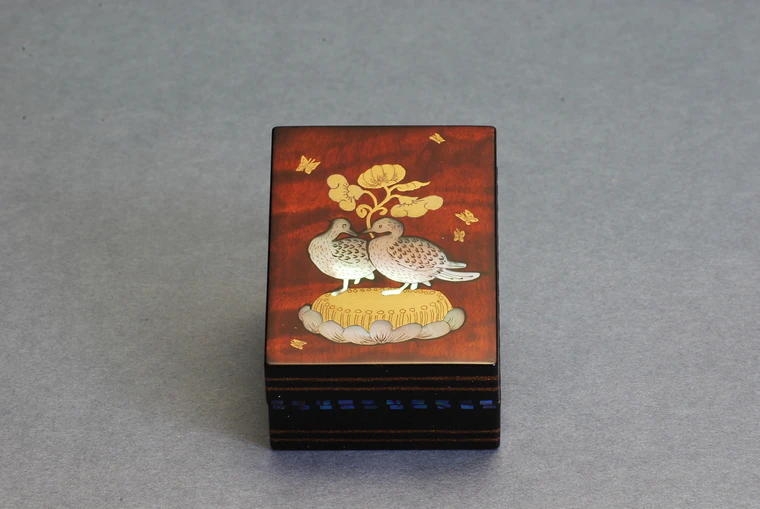Small Box with Spot Billed Duck Design in Mother-of-Pearl Inlay
H 3.0 x W 5.0 x D 7.5 cm,Year.2010The prices of the artworks on Gallery Japan are determined by the artists themselves and are published directly on the website.
- according to today's currency rate
- shipping fees not included
Iori Nakajo
1966 -- Lacquerware
-
Price Range
$1,500 - 21,000
Info
The prices of the artworks on Gallery Japan are determined by the artists themselves and are published directly on the website.
close - Awards at Japan Kōgei Assoc. Exhibitions : 7
About the Artwork
I designed spot-billed ducks using green turban shell inlay on the cover of the box made of horse chestnut. The cover is finished with transparent urushi lacquer.
Description
-
CategoryLacquerware
-
DimensionsH 3.0 x W 5.0 x D 7.5 cm
-
Year presented2010
-
Paulownia BoxIncluded
-
InstructionsAvoid displaying in a room where the sunlight comes in for a long time (a few days). Direct sunlight is strictly prohibited. To clean fingerprints, wipe with eyeglass cloth. It is effective to blow on the piece while wiping. To avoid fingerprints, please use gloves when handling.
Techniques Used
Maki-e
Maki-e (literally “sprinkled pictures”) is a representative lacquerware technique that originated in Japan around 1,200 years ago. Maki-e is done by painting lacquer motifs on the surface of a piece using a fine brush and then sprinkling gold powder onto the lacquer before it hardens, producing luxurious decorations.
Mother-of-pearl inlay (Raden)
Mother-of-pearl inlay (Raden) is a decorative technique that uses the iridescent inner layer of abalone shell, turban shell, pearl oyster shell, or other mollusk shells. The technique came to Japan from China 1,300 years ago, and pieces featuring mother-of-pearl inlay are included among the artifacts at the Shōsōin Repository in Nara.

The prices of the artworks on Gallery Japan are determined by the artists themselves and are published directly on the website.
